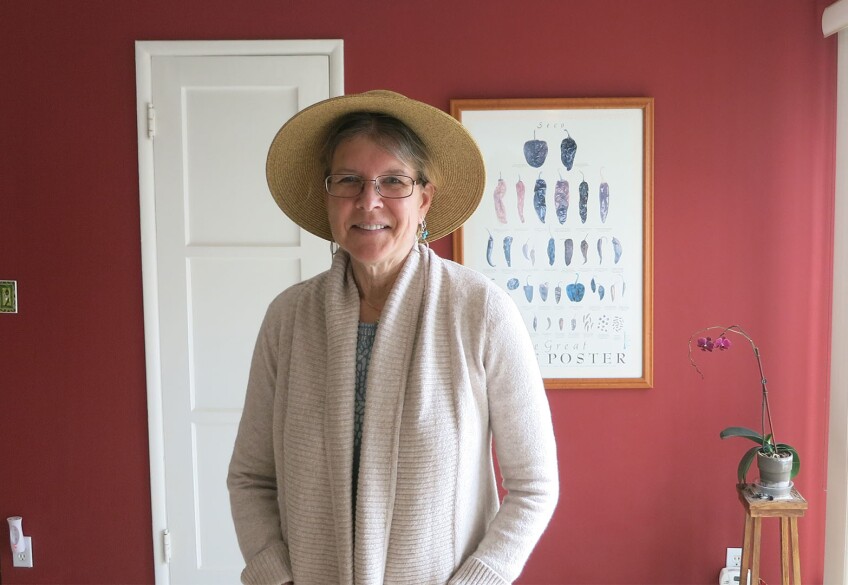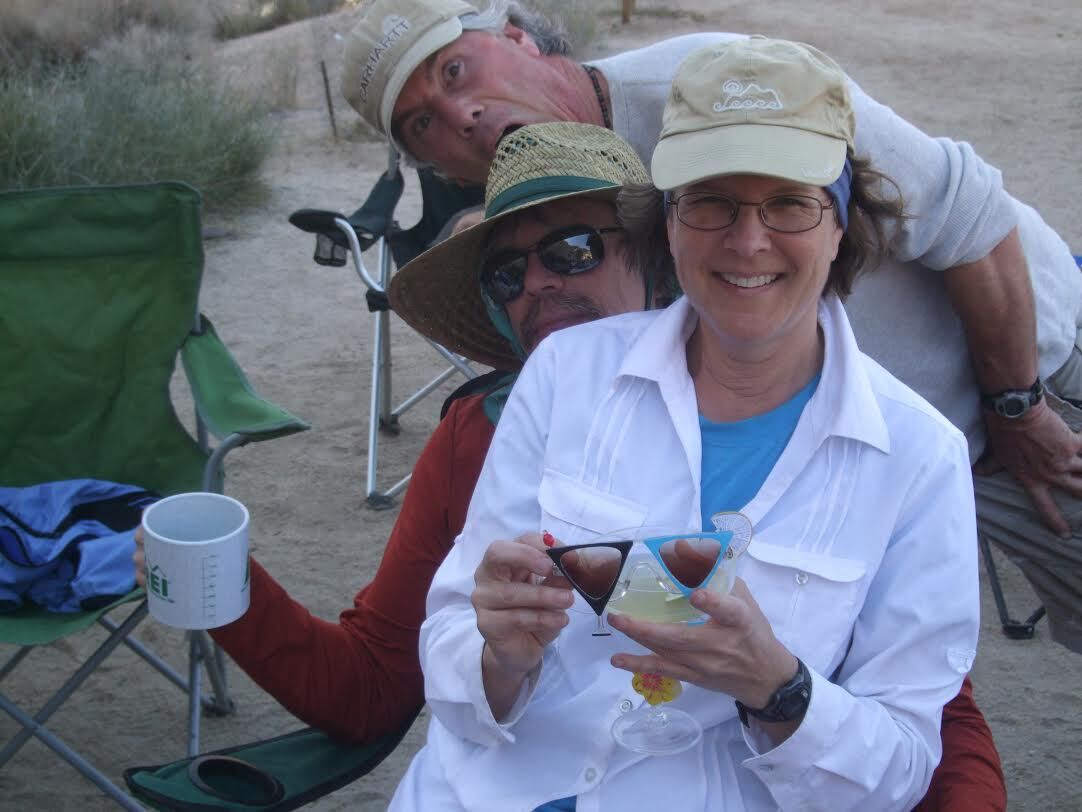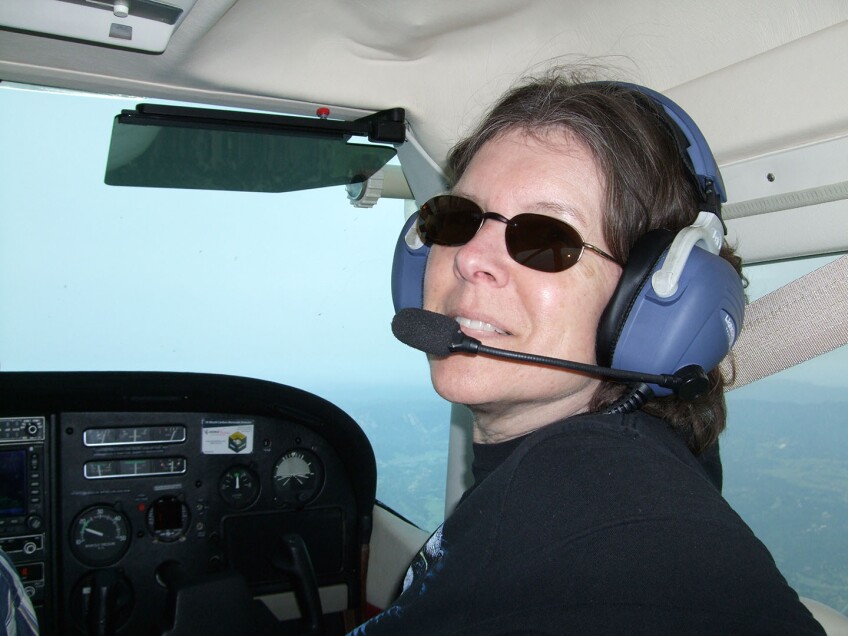Missing in L.A.: How Did a Woman Vanish in Plain Sight?

Update, Dec. 27, 2018: Nancy Paulikas' remains have been found and identified. A skull found in April 2017 and ribs found in September 2018, both at Fossil Ridge Park in Sherman Oaks, have now been identified as Paulikas' through DNA matching, according to her husband Kirk Moody.
In 2016, there was 9,943 reported cases of missing adults in Los Angeles.
Nancy Paulikas was one of them.
Where is she?
That question rarely escapes Kirk Moody’s mind since the day his wife, Nancy, disappeared from a crowded museum in Los Angeles on Oct. 15, 2016. War rooms and search parties have formed, people have driven thousands of miles from the Mexican border to the Central Valley, and still there’s no sign of Nancy Paulikas.
The Manhattan Beach couple visited the Los Angeles County Museum of Art, LACMA, on a Sunday afternoon last October. Fifty-five year old Nancy, a retired senior computer engineer, had been diagnosed with early onset Alzheimer's a year earlier. In the four months before the museum visit, her disease accelerated. She was barely able to speak, and reliant on Kirk for nearly all of her needs. That Sunday at LACMA, however, was a good day for Nancy. There were no tantrums or outbursts.

Just before heading home, they both used the bathroom but somehow got separated. A search of the museum quickly ensued. The Los Angeles Police Department responded with search dogs and scoured the nearby streets but turned up no clues.
Nancy vanished from one of the most populous, congested parts of Los Angeles. She had no money, no purse, no identification and may not have known her full name when she wandered off, according to her husband.
Law enforcement has ruled out suspecting Kirk in her disappearance. Surveillance footage from a few nearby stores in the Fairfax district shows Nancy walking on Wilshire Boulevard and then turning down a side street. The grainy images are the only clues Kirk and his family have as to where she may have gone.
Finding the footage was a mission in itself.
One business was “willing to let us watch the video but they didn’t know how to copy it for us. So, my friend stayed up there and watched several hours of videos," said Moody.
Kirk tackled his wife’s disappearance much as he would one of his engineering projects. His kitchen was covered with maps, and he used spreadsheets and mathematical equations to estimate how far Nancy could have walked given her good physical shape. Sign-up sheets, databases and phone trees were established for volunteers who wanted to go look for Nancy.
Kirk was persuaded to trade in his flip phone for a smart phone so he could check emails in real time. Someone made daily call to the coroner’s office. LAPD detectives assisted by checking out known homeless encampments, even though that was a long shot given her condition.
"She probably wouldn't be able to survive in the homeless community. Someone would really have to be taking care of her all the time and it’s just not possible," said Moody.
A theory on what happened to Nancy quickly formed: She was in a nursing home or adult care facility listed as a Jane Doe. Only a residential care unit would be able to handle her — and could get paid for doing so.
After a few phone calls and visits, Kirk and the other volunteers learned there is no coordinated system or database between all law enforcement agencies and the medical community to track at-risk mentally impaired adults.
However, Detective Samuel Soto of LAPD’s Adult Missing Persons Unit says his six-person team sends notifications to local hospitals in the case of an at-risk missing adult. In the past, when social workers at care facilities have contacted the LAPD about Jane and John Does, they have been successful in identifying individuals.
As a standard practice, however, residential care facilities do not necessarily share information among each other or with law enforcement about any non-identifiable patients they may have. Without that coordination, Kirk and his dwindling group of volunteers have been forced to personally visit the facilities. There are 119,000 skilled nursing facilities and 7,460 assisted living facilities California. Kirk has reached out to over 2,600 of them.
Every week, Nancy’s elderly parents still visit three or four nursing homes across the Southland. They’ve traveled as far south as San Diego and as far north as Kern County. Convinced she’s alive, it’s the only thing they can do to locate their only daughter, who had become increasingly difficult in the weeks before her disappearance.
"It was getting to a point we couldn’t take her out to dinner or in public,” said Joan Paulikas.
Nancy would get irritable and difficult to manage during outings. The cruelness of Alzheimer's seems particularly acute in situations like Nancy’s, who at 55 had just retired when she was diagnosed. A pilot at 17, a top graduate at UC Davis and a respected engineer, she was a brilliant mind who was so independent she and Kirk eloped and got married in Independence, California. On the day she disappeared, she could barely cross the street on her own.
Now her parents worry she is so burdensome, who would take care of her? That is what drives them to keep looking.
Occasionally they’ll encounter people who think they’ve seen Nancy, but those leads have led nowhere. Her parents blame the false leads on her common looks.
"She’s tall, slim, brown hair and blue eyes. She looks like so many people," said George Paulikas.
Carol Sloan, a public affairs representative with the California Department of Health Care Services, confirmed to "SoCal Connected" there are fewer than 11 Jane Does listed in its database of the thousands of facilities covered by Medi-cal. Sloan said by law the exact number cannot be made public if it is under 11. She also added the state’s information on Jane and John Does is generated on a county level. Counties process the patient's’ eligibility requirements and would be the first to note the status of a Jane or John Doe.
When contacted, a representative for the Los Angeles County Department of Public Services confirmed it has over 190 Jane Does in its system, but only one would fit the timeframe of Nancy’s disappearance. Kirk was already aware of that case.
Lost and Found in L.A.
About 300 to 350 people are reported missing each month in the City of Los Angeles, according to LAPD’s website. But just a few appear on the department’s missing persons website and it doesn’t appear many cases are updated. Some are decades old, a few dating back to the early 1960s. The LAPD’s Adult Missing Persons Unit is limited in how involved they can get in a case because going missing is not a crime.

Most of LA’s missing — about 80 percent — are located within two or three days, according to the Adult Missing Person’s Unit.
Positive identifications run even higher at the L.A. County Coroner’s Office.
"Annually we get about 500 John Doe and Jane Doe reports. By the end of the year we identify all but maybe 20," said Coroner’s Capt. John Kades.
Every unidentified body remains an open case, some dating to the 1950s.
"If someone's missing and family and friends go to any law enforcement agency, they are obligated and mandated by law to have the family submit a DNA swab. That DNA goes into the missing person database," Kades said.
Because of a backlog, familial DNA can take a couple of years to process before law enforcement agencies can determine if a match is made.
"Theoretically, if her body shows up somewhere or someplace, regardless of her condition, hopefully it’ll get put together, but it’s kind a marathon at that point," Kades said.
Nancy is one of almost 450 mentally and physically impaired adults who were reported missing in L.A. County in 2016 alone.
At the beginning of 2017, county Supervisors Janice Hahn and Kathryn Barger established the Bringing Our Loved Ones Home Task Force. It aims to bring together first responders and community organizations to create a countywide system for the recovery of missing adults who have dementia, Alzheimer's and autism. Nancy’s story was a motivation.
"There needs to be a better coordinated protocol for the family, who is already grieving, who shouldn’t have to bear this burden by themselves," Hahn said.
For now, Kirk keeps waiting for the phone call that will bring Nancy home.
"I never lose hope," Kirk said. "I keep hoping that I’m going to find her."















